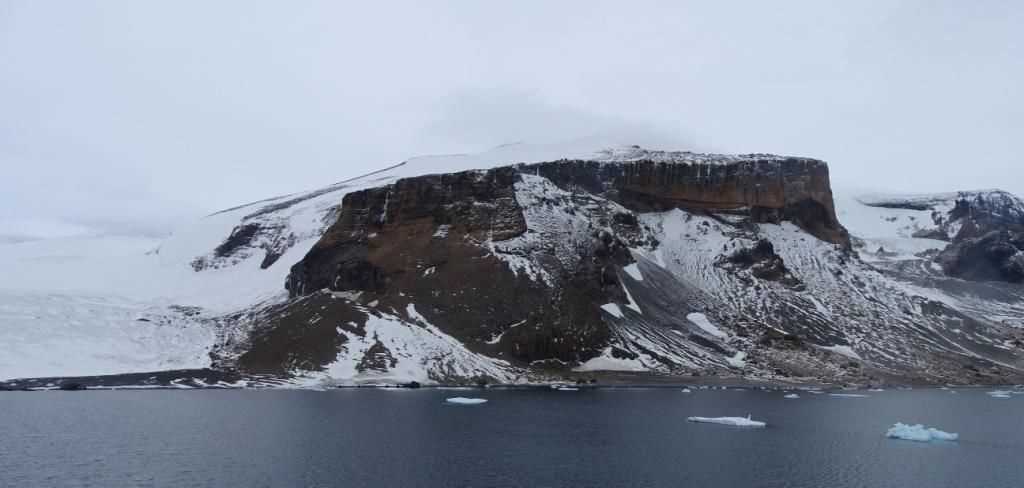National Geographic Explorer made its way to the Antarctic Sound during the night and entered the Weddell Sea. We arrived at Brown Bluff to conduct our first landing early in the morning. Brown Bluff is located on the eastern side of the Antarctic peninsula and is the exposed portion of a glacial volcano. The north-facing beach is made of rock and ash, is approximately 2 miles long, and offers excellent views of nesting Adélie and gentoo penguins.
Although it was a cold day, the visibility and wind conditions were superb. We had the opportunity to encounter penguins and walk along the sandy beach surrounded by the magnificent walls of Brown Bluff. While some of us were on land, others enjoyed a presentation on the Convention for the Conservation of Antarctic Marine Living Resources (CCAMLR) and the management of the Antarctic krill fishery.
After a glorious morning, we made our way to Paulet Island, navigating through a magical landscape full of icebergs and sea ice floes, on top of which we saw Adélie penguins, Weddell seals, and fur seals. Shortly after lunch, our expedition leader spotted a group of Type B killer whales that were transiting through the area. The whale team got in a Zodiac and off they went to try to get closer to the orcas. We spent time watching the killer whales and the frightened penguins that were intimidated by their presence. It was a beautiful time of the day to be outside on deck.
We arrived at Paulet Island in the afternoon. Some of us went ashore while others enjoyed a Zodiac cruise among the icebergs. Though small, Paulet Island is home to approximately 100,000 breeding Adélie penguins. The high concentration of penguins was easy to verify due to the very strong guano smell. We landed and visited the remains of a hut built by some members of the Nordenskjöld expedition (1901-04) to live in as they wintered. Surrounded by thousands of Adélie penguins, we walked along the beach to arrive at a blue-eyed shag breeding colony. Along the way, we saw hundreds of Adélie penguins resting on top of an iceberg very close to shore. Besides penguins and shags, there were also many sheathbills busy picking up anything edible in the breeding colonies of both species. It was a wonderful afternoon, and as we left the beach, the sun made its way through the clouds.
As National Geographic Explorer continued into the Weddell Sea, we received news from the bridge that an emperor penguin was resting on a nearby ice floe with a group of Adélie penguins. The ship reduced its speed and the captain brought us close. Encountering emperor penguins in this area is a rare experience, so everyone—both guests and staff—was very excited. Shortly thereafter, National Geographic Explorer resumed its course and we continued our explorations.









